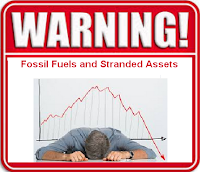Apple has mined a small fortune from its own waste in both dollars and social capital. While Apple has only recently become a sustainability leader, they have been focused on recycling for many years dating back to the time when Steve Jobs was still at the helm. The problem of waste is increasingly serious but Apple is ahead of the curve and leading the way forward.
The volume of waste keeps increasing while many landfills are rapidly nearing capacity. Smart businesses need to follow Apple's lead as we anticipate a more stringent regulatory regimes in the form of Extended Provider Responsibility regulations.
Recycling has come a long way and it is destined to undergo a lot more changes, particularly with regard to e-waste in the years to come. In 2013 620 million pounds of consumer electronics were recycled in the US setting a new record. Apple is not alone in its recycling efforts, cell phone manufacturers are working on reducing waste. Verizon has already collected more than 2 million pound of e-waste and the company plans to collect another 2 million pounds of e-waste by 2020. Dating back several years we have seen e-waste recycling efforts from Samsung, Sprint, LG, AT&T, and others. Recycling is now a business imperative and led by Apple, Verizon and others 2016 may stand out as a year in which recycling comes into its own.
As reviewed in a Triple Pundit article, Best Buys e-waste take back is excellent customer service. As explained by Manufacturing.Net:
"Creating a closed loop with consumers is an excellent way to drive business growth, delight customers and make significant progress towards lowering a company’s carbon footprint."
Recycling not only benefits the environment and the economy it can create millions of jobs. It can also create new revenue streams. According to an IBISWorld report, revenue for the cell phone recycling industry is estimated to increase until 2019.
Smart companies are analyzing their waste data and collaborating with stakeholders to assume greater control of the waste management process. Examples of recycling collaboration in the electronic industry are EPA’s Sustainable Materials Management Electronics Challenge and the R2 Responsible Recycling Leader Program. In 2014 EClaim Recovery Specialists created a new revenue sharing program with businesses that generate large amounts of electronic waste from electronics, computers and networking equipment.
Companies are beginning to appreciate that it makes no sense to pay a third party to remove waste that has value. Waste is big business, more than $100 billion are generated each year by the US scrap metal industry alone.
Most electronics devices still end up in landfills at their end of life making e-waste recycling a huge largely untapped opportunity. While there are a wide variety of items that can be recycled, there is no greater or more urgent opportunity than the one afforded by e-waste. The e-waste from up to 1 billion computers will need to be recycled by 2020. In 2014 there were 1.8 billion new cell phones and only 3 percent were recycled. Last year we generated roughly 42 metric tons of e-waste worth about $52 billion. Only one-sixth of e-waste is currently diverted for proper recycling and reuse. According to StEP, by 2017 the volume of e-waste is estimated to reach almost 66 metric tons.
E-waste has value in the form of iron, copper, gold, silver, aluminum and other resources. An average mobile phone contains about 300 mg of silver and 30 mg of gold. When added up across all phones to be sold the two metals alone are worth billions. However the value lies in separating valuable metals, plastic and glass from toxic materials like leaded glass, batteries, mercury, cadmium and chlorofluorocarbons (CFCs).
Apple proves that while sustainability is good for people and the environment, it also benefits their brand and the bottom line. Apple is generating significant revenues from its recycling efforts.
As reported by Environmental Leader, Apple diverts massive amounts of e-waste away from landfills. The company collected about 90 million pounds of e-waste last year or 71 percent of the total weight of the products sold seven years earlier. This is both responsible business and a lucrative source of revenue.
Apple's recycling efforts are paying dividends and benefiting the environment by reducing their demand for resources. They have yielded 2,204 pounds of gold worth $43.6 million from recycled electronic devices last year. Apples recycling efforts also recouped 6,600 pounds of silver, 3 million pounds of copper, 23 million pounds of steel; 13 million pounds of plastic, 12 million pounds of glass and 4.5 million pounds of aluminum. Instead of ending up in a landfill, Apple will reuse 61.4 million pounds of recovered material from last year.
To increase the efficiency of their recycling efforts Apple has developed a robot named Liam designed to dismantle iPhone into useful materials. Liam can disassemble 1.2 million phones a year.
At Apple's March 21 2016 event on Monday, vice president of Environment, Policy and Social Initiatives Lisa Jackson took to the stage to discuss the company's environmental initiatives, and debut its robot.
Related
Apple May Have Stopped Growing but it is Still a Sustainability Leader
Apple's Reversal on EPEAT
Businesses Innovative and Diverse Recycling Efforts
Recycling In America: More Than Just A Feel Good Experience
The 3 Stages of a Recycling Loop
Electronics Industry Problems and Solutions (2014 Greenpeace Report)
Video - Problems in the Life Cycle of a Smartphone
Infographic - Following E-Waste
US e-Waste: Review of Recycling and Other Efforts
Infographic - Export of e-waste to Dumping Sites
Jobs Through Electronic Recycling Report
The Growing Problem of Cell Phone Waste
Greenpeace e-Waste Investigation (Video)
The Problems and Solutions of e-Waste (Video)
US e-waste is Polluting Toxic Dumps in Ghana (Video)
The US Desire to be "Green" is Causing an e-Waste Hell China (Video)
The volume of waste keeps increasing while many landfills are rapidly nearing capacity. Smart businesses need to follow Apple's lead as we anticipate a more stringent regulatory regimes in the form of Extended Provider Responsibility regulations.
Recycling has come a long way and it is destined to undergo a lot more changes, particularly with regard to e-waste in the years to come. In 2013 620 million pounds of consumer electronics were recycled in the US setting a new record. Apple is not alone in its recycling efforts, cell phone manufacturers are working on reducing waste. Verizon has already collected more than 2 million pound of e-waste and the company plans to collect another 2 million pounds of e-waste by 2020. Dating back several years we have seen e-waste recycling efforts from Samsung, Sprint, LG, AT&T, and others. Recycling is now a business imperative and led by Apple, Verizon and others 2016 may stand out as a year in which recycling comes into its own.
As reviewed in a Triple Pundit article, Best Buys e-waste take back is excellent customer service. As explained by Manufacturing.Net:
"Creating a closed loop with consumers is an excellent way to drive business growth, delight customers and make significant progress towards lowering a company’s carbon footprint."
Recycling not only benefits the environment and the economy it can create millions of jobs. It can also create new revenue streams. According to an IBISWorld report, revenue for the cell phone recycling industry is estimated to increase until 2019.
Smart companies are analyzing their waste data and collaborating with stakeholders to assume greater control of the waste management process. Examples of recycling collaboration in the electronic industry are EPA’s Sustainable Materials Management Electronics Challenge and the R2 Responsible Recycling Leader Program. In 2014 EClaim Recovery Specialists created a new revenue sharing program with businesses that generate large amounts of electronic waste from electronics, computers and networking equipment.
Companies are beginning to appreciate that it makes no sense to pay a third party to remove waste that has value. Waste is big business, more than $100 billion are generated each year by the US scrap metal industry alone.
Most electronics devices still end up in landfills at their end of life making e-waste recycling a huge largely untapped opportunity. While there are a wide variety of items that can be recycled, there is no greater or more urgent opportunity than the one afforded by e-waste. The e-waste from up to 1 billion computers will need to be recycled by 2020. In 2014 there were 1.8 billion new cell phones and only 3 percent were recycled. Last year we generated roughly 42 metric tons of e-waste worth about $52 billion. Only one-sixth of e-waste is currently diverted for proper recycling and reuse. According to StEP, by 2017 the volume of e-waste is estimated to reach almost 66 metric tons.
E-waste has value in the form of iron, copper, gold, silver, aluminum and other resources. An average mobile phone contains about 300 mg of silver and 30 mg of gold. When added up across all phones to be sold the two metals alone are worth billions. However the value lies in separating valuable metals, plastic and glass from toxic materials like leaded glass, batteries, mercury, cadmium and chlorofluorocarbons (CFCs).
Apple proves that while sustainability is good for people and the environment, it also benefits their brand and the bottom line. Apple is generating significant revenues from its recycling efforts.
As reported by Environmental Leader, Apple diverts massive amounts of e-waste away from landfills. The company collected about 90 million pounds of e-waste last year or 71 percent of the total weight of the products sold seven years earlier. This is both responsible business and a lucrative source of revenue.
Apple's recycling efforts are paying dividends and benefiting the environment by reducing their demand for resources. They have yielded 2,204 pounds of gold worth $43.6 million from recycled electronic devices last year. Apples recycling efforts also recouped 6,600 pounds of silver, 3 million pounds of copper, 23 million pounds of steel; 13 million pounds of plastic, 12 million pounds of glass and 4.5 million pounds of aluminum. Instead of ending up in a landfill, Apple will reuse 61.4 million pounds of recovered material from last year.
To increase the efficiency of their recycling efforts Apple has developed a robot named Liam designed to dismantle iPhone into useful materials. Liam can disassemble 1.2 million phones a year.
At Apple's March 21 2016 event on Monday, vice president of Environment, Policy and Social Initiatives Lisa Jackson took to the stage to discuss the company's environmental initiatives, and debut its robot.
Related
Apple May Have Stopped Growing but it is Still a Sustainability Leader
Apple's Reversal on EPEAT
Businesses Innovative and Diverse Recycling Efforts
Recycling In America: More Than Just A Feel Good Experience
The 3 Stages of a Recycling Loop
Electronics Industry Problems and Solutions (2014 Greenpeace Report)
Video - Problems in the Life Cycle of a Smartphone
Infographic - Following E-Waste
US e-Waste: Review of Recycling and Other Efforts
Infographic - Export of e-waste to Dumping Sites
Jobs Through Electronic Recycling Report
The Growing Problem of Cell Phone Waste
Greenpeace e-Waste Investigation (Video)
The Problems and Solutions of e-Waste (Video)
US e-waste is Polluting Toxic Dumps in Ghana (Video)
The US Desire to be "Green" is Causing an e-Waste Hell China (Video)
















